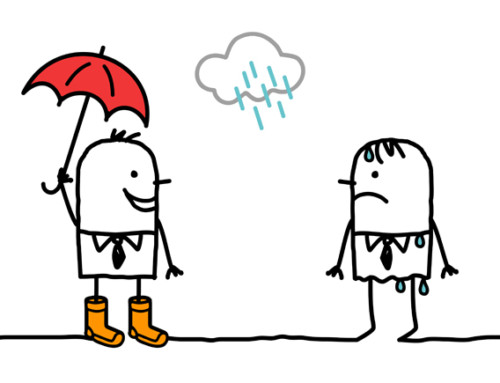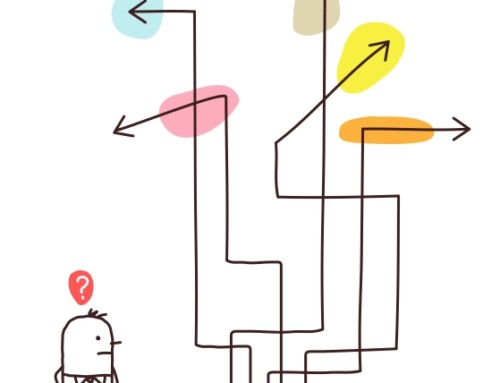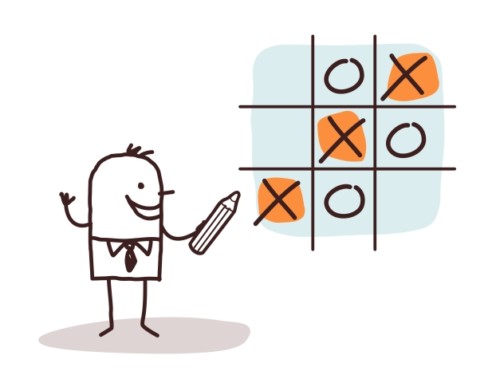In this article, I discuss how to choose a good hot thought which you can check and change to feel better in difficult situations.
Much of my work as a Calgary psychologist and a Cochrane psychologist entails helping my clients to change how they feel by changing the way they think, a key process in cognitive behavioural therapy (CBT). In this process, clients use a tool known as a thought record to track the negative thoughts which come into their minds in everyday difficult situations they encounter.
These negative thoughts are known in CBT as ‘hot thoughts’ and are largely responsible for the person experiencing undue distress in response to these situations in the form of emotions like anxiety, anger, frustration, guilt and sadness. Fortunately, these hot thoughts are typically beliefs which are not completely accurate and, with the help of a thought record, can be changed to more accurate ‘balanced thoughts’ which reduce emotional distress to a more manageable level.
An important consideration in deciding which hot thought to work on is whether it is a thought which is specific to the upsetting situation or one which is ‘underneath’ the situation-specific thought and is more general in scope. For example, if I were emotionally upset as a result of having made several mistakes at work today, situation-specific hot thoughts could be: “I made several mistakes at work today” and “I performed poorly at work today”. General thoughts implied by the situation-specific thoughts could be, “I’m not a good worker”, “I’m incompetent”, “My boss doesn’t think I’m a good worker”, “My boss doesn’t like me”, “I’m going to receive a negative performance evaluation”, “I’m going to be fired” and “I won’t be able to support myself”.
Both the situation-specific thoughts and the general thoughts implied by them may be good choices for hot thoughts driving the emotions experienced in this situation. In the following sections, I will discuss some considerations in deciding whether to choose a situation-specific thought or a more general thought as your hot thought to work on in order to give yourself emotional relief.
First rule of thumb: Start with a situation-specific thought
I normally suggest that clients start with a situation-specific thought as their hot thought choice. Choosing such as thought is often more straightforward to check with evidence because the evidence pertains to one situation. For example, “I performed poorly at work today” can be evaluated quickly in terms of evidence supporting and not supporting it. If this checking results in finding enough evidence which does not support the hot thought, it can quickly lead to an alternative thought which provides emotional relief because it is less negatively skewed.
In this example, such a ‘balanced thought’ might be, “Although I made some mistakes at work today, I also did very well at times so that overall my performance was good.” Such a balanced thought can lead to a reduction in frustration, anxiety, sadness and guilt in a time-efficient manner. In contrast, it is more time-consuming to gather evidence which supports and does not support a general thought such as, ““I’m not a good worker”, “I’m incompetent”, “My boss doesn’t think I’m a good worker”, “My boss doesn’t like me”, “I’m going to receive a negative performance evaluation”, “I’m going to be fired” and “I won’t be able to support myself”.
Another advantage of starting with situation-specific hot thoughts is that they tend to require less emotional energy to evaluate than general thoughts because they are not as broad in their scope and possible negative implications. For example, the situation-specific thought “I performed poorly at work today” has fewer possible negative implications and is therefore requires less emotional energy to evaluate than general thoughts like “I’m not a good worker”, “I’m incompetent”, “My boss doesn’t think I’m a good worker”, “My boss doesn’t like me”, “I’m going to receive a negative performance evaluation”, “I’m going to be fired” and “I won’t be able to support myself”.
So if you can identify a situation-specific hot thought for which you are able to find evidence which does not support it, choose it as the quickest and least emotionally draining way to give yourself emotional relief.

Second rule of thumb: Choose a general thought if the situation-specific thought doesn’t work
Although efficiency and emotional energy considerations make choosing a situation-specific hot thought a logical first option, sometimes it is necessary to choose as your hot thought a more general thought which is implied by the situation-specific hot thought. The condition leading to this second option is that the situation-specific hot thought is a complete fact or close to it. That is, if there is only evidence supporting the hot thought and no evidence not supporting the hot thought, there is no possibility of changing the hot thought to a more balanced alternative thought to decrease your emotional distress.
Situation-specific thoughts are more likely than general thoughts to be complete facts or close to them. Using the example I used previously, the situation-specific thought “I performed poorly at work today’ might in some instances have most of the evidence supporting it rather than not supporting it. This means that changing the hot thought to a balanced alternative to reduce one’s distress will be very difficult.
In such an instance, choosing one of the general thoughts I listed which is implied by the situation-specific thought would be the best course of action. Because general thoughts are wider ranging than situation-specific thoughts in terms of the available evidence relating to them, they are less likely to be complete facts. That is, it is more likely you will be able to find evidence which does not support a general hot thought than a situation-specific hot thought. In turn, this lets you change the hot thought to a balanced alternative thought which will reduce your emotional distress.
The key to benefiting from thought records: Choosing a good hot thought
Although thought records have many straightforward elements, choosing a good hot thought is often challenging and is a skill which improves with practice. The guidelines for doing so which I have discussed in this article should help you in this important endeavor which I believe is the key to benefiting from thought records.
May you develop the skill of choosing good hot thoughts,
-Dr. Pat





Leave A Comment